Elrond is an important Elven lord in The Lord of the Rings. His role in the heroes' war against the Dark Lord, Sauron, is crucial. From his place in Tolkien's writings to his role in Peter Jackson's films, here are 7 facts you (maybe) didn't know about Elrond.
#9 Elrond's name is rich in meaning for Tolkien (making of)
For J.R.R. Tolkien, the name Elrond, in Sindarin (one of the many Elvish languages), has a deep meaning. It means "starry dome" or "cave elf," coming from el (star or elf) and rond (cave, vault). This name was given to it because it was found in a cave. Tolkien also later explained that the name Elrond also evokes "the vault of stars," in homage to Menelrond, the throne room of Elwë (one of the first great leaders of the elves). This writing choice on Tolkien's part allows him to reflect the cultural richness of the elves, where each name carries a meaning linked to the history and nature of the character.
#8 Elrond cannot force Isildur to throw the Ring into the volcano (canon)
In the Lord of the Rings films, we see a scene where Elrond accompanies Isildur into the volcano, where the One Ring can be destroyed. Unfortunately, despite Elrond's insistence, the already corrupted Isildur refuses to destroy it. This leads many viewers to wonder why Elrond doesn't insist more, or take action himself to get rid of this cursed object once and for all. Well, in reality, this scene is simply absent from the books. In Tolkien, Isildur doesn't act on a mere whim: he is guided by pain (psychological and physical), wanting to keep the Ring as a memory of his slain father. He was still completely unaware of its true nature. For his part, Elrond, aware of the danger of imposing force, chooses not to oppose him head-on.
Indeed, a confrontation could have triggered a war between Elves and Men, then allies. Moreover, even Elrond was not immune to corruption. Isildur might have renounced the Ring, but he is killed by Orcs before he has the chance. The Ring's power, insidious, always defends him. Even the strongest will is not enough to defeat him. This scene between Isildur and Elrond at the edge of the volcano is therefore an invention of director Peter Jackson, intended to help viewers better understand the issues, but it was impossible to push this idea further without betraying the spirit of Tolkien's lore.
#7 Here is the link that truly unites Elrond and Galadriel (canon)
The series The Rings of Power presents Elrond and Galadriel as very close friends, even intimate, going so far as to have them kiss in season 2. This dramatic approach can be understandable, But it departs completely from Tolkien's canon. In reality, Elrond is not Galadriel's suitor, but... her son-in-law. Indeed, he is married to her daughter, Celebrían, with whom he had Arwen and two sons. Galadriel is therefore his stepmother, not a childhood friend or potential lover. Tolkien does not detail their personal relationship in his writings, but he leaves no doubt about this familial connection. By ignoring Celebrían and introducing vague romantic tension, the series intentionally departs from the source material to serve a different narrative. While this story choice may "enrich" the television drama, it in no way reflects the canonical universe created by Tolkien.
#6 The films do not depict certain aspects of the Council of Elrond (canon)
In The Lord of the Rings, the Council of Elrond chapter is central: it unites the members of the future Fellowship and addresses a major theme of Tolkien's: the encounter between destiny and free will. In the films, this scene is shortened for reasons of pacing, to the detriment of essential narrative richness. Each member of the Fellowship actually arrived in Rivendell for their own reasons, often linked to troubling events in their kingdoms. By neglecting these details, the film weakens the idea that these meetings, although seemingly fortuitous, are actually part of a larger plan, devised by the gods, and of which Elrond is one of the most important focal points.
#5 Here's why Galadriel isn't at the Council of Elrond (canon)
As we saw previously, almost all the participants in the Council of Elrond end up there almost by chance, or because a personal journey has led them to Rivendell. This meeting is thus as much planned as the result of a fortuitous convergence of everyone's destinies, reflecting the role of chance and fate in the history of Middle-earth. However, Galadriel, although extremely powerful, does not need to be physically present at this council. Like the mysterious and elusive figure of the being named Tom Bombadil, often mentioned during the Council (in the books), her influence goes beyond mere presence.
Galadriel even communicates telepathically with Elrond, embodying a distant and mystical wisdom. Her role is therefore elsewhere, more symbolic and spiritual, guiding in a certain way the Community from a distance. Thus, his absence is not an oversight by Tolkien, but rather a coherent narrative decision, which reinforces the mystery surrounding his character and leaves room for the other heroes to evolve freely.
#4 The sons of Elrond faced a sorcerer trained by Sauron (expanded universe)
In the video game The Lord of the Rings: War in the North, Elladan and Elrohir, the sons of Elrond (discussed in detail here), play a crucial role in the face of a growing threat: Agandaûr, a Black Númenórean trained by Sauron himself(as the Mouth of Sauron). Ambitious and cruel, Agandaûr seeks to establish an evil kingdom in the North, relying on the remnants of the Witch-king of Angmar's army, Orcs, Trolls, and other corrupted creatures. Elrond, aware of the gravity of the situation, sends his sons to reconnoiter Fornost, where Agandaûr gathers his forces. Accompanied by the game's heroes (Eradan, Farin, and Andriel), the elf twins participate in the assault on the citadel. Arriving on the scene, they confront Agandaûr himself. Despite their power, they are temporarily overwhelmed until the arrival of the three heroes, who turn the tide of battle. Agandaûr, cornered, escapes on a winged creature thanks to his sorcery. Obviously, this fight is only one step in the fight against the growing evil in the North. From then on, it is the game's three heroes who continue the adventure, meeting new allies and, of course, new perils.
#3 Elrond had to organize resistance against a new enemy (extended universe)
In The Lord of the Rings Online, Elrond, the wise Lord of Rivendell, faces a formidable threat: Ferndúr the Virulent. This character is a powerful wraith-lord determined to unleash a deadly plague on the north of Middle-earth. This new enemy hides in the Lost Temple, an ancient sanctuary located in the woods known as the Troll Thickets (or Trollshaws or Troll Groves, depending on the version). Ferndúr, master of the undead, is conducting gruesome experiments to create an army of corpses infected with a kind of plague (to put it simply) that could ravage the free lands. Elrond discovers this plan thanks to a broken tablet found in the temple, revealing the gravity of the situation. To stop Ferndúr, Elrond organizes an expedition to the Lost Temple. The heroes, along with the player character, must confront powerful undead servants, including ancient kings of Angmar imprisoned under a curse, as well as the fearsome Angmarim siblings, Sidhág and Angaidh (humans adept at black magic). The battles are difficult and require a certain amount of coordination, since Ferndúr uses devastating spells and reanimates fallen corpses. The survival of the North therefore depends on the success of this resistance organized by Elrond to prevent the spread of this virulent plague.
#2 Hugo Weaving will never play Elrond again (making of)
With the announcement of the filming of The Hunt for Gollum, many fans wondered if Hugo Weaving, famous for his role as Elrond in The Lord of the Rings trilogy is reportedly making a comeback. However, the actor has made it clear that he will not return to Tolkien's universe. At 64, Hugo Weaving explains that he has "spent too much time in Middle-earth" and does not wish to return, despite the temptation of a new role (and especially a big paycheck). He also emphasizes an important point: Elrond is immortal, while he is aging, making it difficult to maintain credible continuity on screen. Thus, the role of Elrond will be given to a new actor, if the character appears, while other original cast members, such as Sir Ian McKellen (Gandalf), may return. A page is turning for Hugo Weaving's mythical Elrond, who was present in 5 out of 6 films.
#1 When Elrond became a saint (anecdote)
Far from Middle-earth, on our good old planet Earth, and more precisely in Brazil, a surprising story made Lord of the Rings fans smile in 2016. A fan named Gabriela Brandao discovered that her grandmother had been praying for years in front of a statue of Elrond. The poor woman had long believed she was in the presence of a small statuette representing Saint Anthony of Padua, when it was actually an Elrond figurine from a Kinder Surprise collection from the early 2000s. This confusion is all the more ironic given that Christians who pray to Saint Anthony of Padua generally do so to help them find lost objects. After finally understanding the misunderstanding, the family replaced the statue, and the grandmother's prayers were partly answered, as she at least found the right statue.
And if you liked this article, you can also discover our various files on the most famous Elves of Middle-earth: Gil-galad the king of the elves, Legolas, Galadriel, Celebrimbo, or even Celeborn, Galadriel's husband,


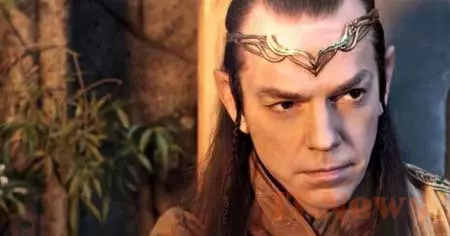
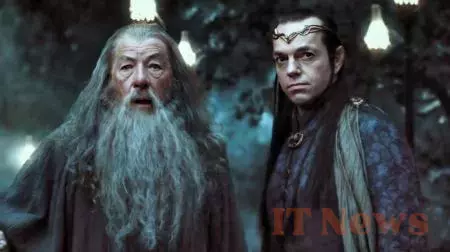
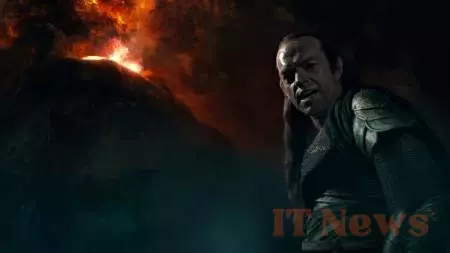
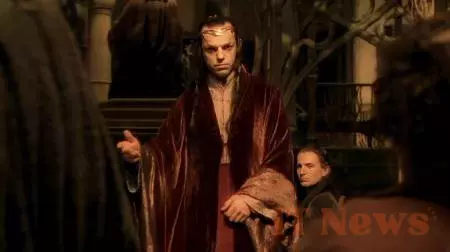

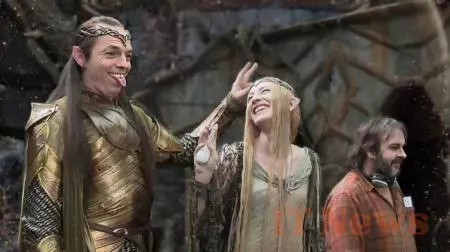
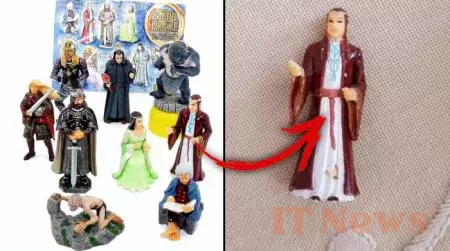

0 Comments